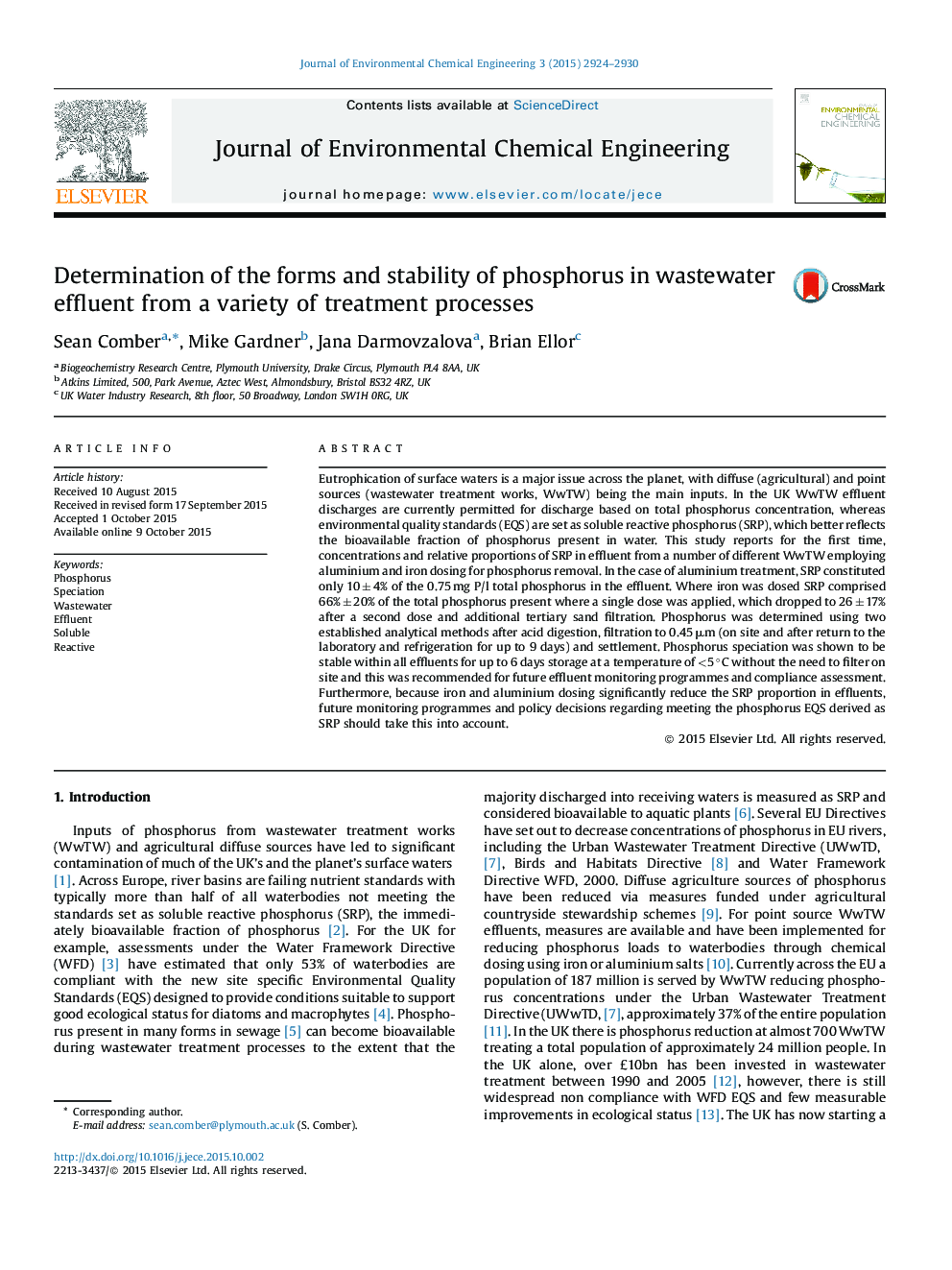| کد مقاله | کد نشریه | سال انتشار | مقاله انگلیسی | نسخه تمام متن |
|---|---|---|---|---|
| 222100 | 464269 | 2015 | 7 صفحه PDF | دانلود رایگان |
• Phosphorus forms in metal salt dosed sewage works effluent reported for first time.
• Soluble reactive phosphorus in dosed effluents as low as 10% of total phosphorus.
• Soluble reactive phosphorus stable in refrigerated samples for up to 9 days.
• Future permitting of discharges should take account of phosphorus speciation.
Eutrophication of surface waters is a major issue across the planet, with diffuse (agricultural) and point sources (wastewater treatment works, WwTW) being the main inputs. In the UK WwTW effluent discharges are currently permitted for discharge based on total phosphorus concentration, whereas environmental quality standards (EQS) are set as soluble reactive phosphorus (SRP), which better reflects the bioavailable fraction of phosphorus present in water. This study reports for the first time, concentrations and relative proportions of SRP in effluent from a number of different WwTW employing aluminium and iron dosing for phosphorus removal. In the case of aluminium treatment, SRP constituted only 10 ± 4% of the 0.75 mg P/l total phosphorus in the effluent. Where iron was dosed SRP comprised 66% ± 20% of the total phosphorus present where a single dose was applied, which dropped to 26 ± 17% after a second dose and additional tertiary sand filtration. Phosphorus was determined using two established analytical methods after acid digestion, filtration to 0.45 μm (on site and after return to the laboratory and refrigeration for up to 9 days) and settlement. Phosphorus speciation was shown to be stable within all effluents for up to 6 days storage at a temperature of <5 °C without the need to filter on site and this was recommended for future effluent monitoring programmes and compliance assessment. Furthermore, because iron and aluminium dosing significantly reduce the SRP proportion in effluents, future monitoring programmes and policy decisions regarding meeting the phosphorus EQS derived as SRP should take this into account.
Figure optionsDownload as PowerPoint slide
Journal: Journal of Environmental Chemical Engineering - Volume 3, Issue 4, Part A, December 2015, Pages 2924–2930
